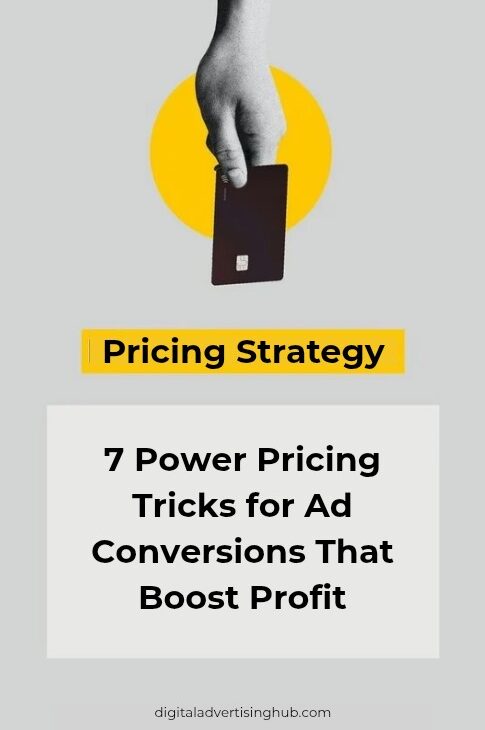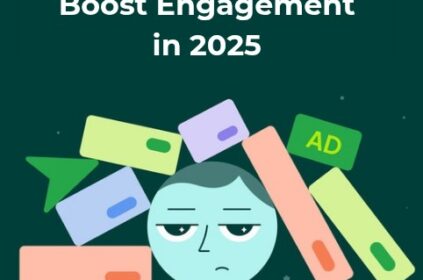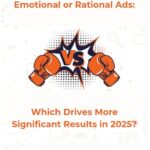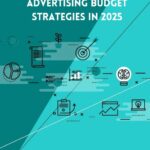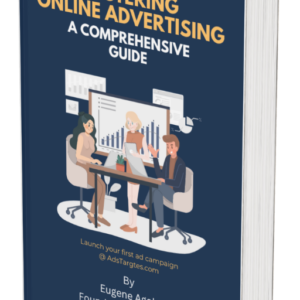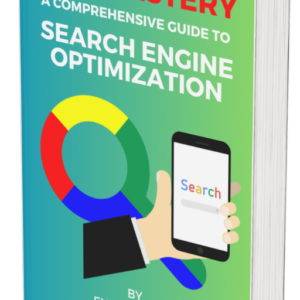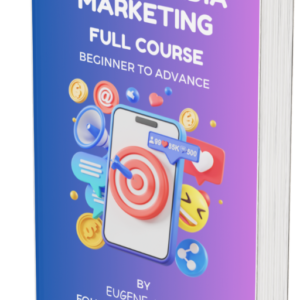In 2025’s performance-driven ad ecosystem, pricing strategy is as influential as creative quality or targeting precision.
Every tweak to price presentation affects how users interpret value and decide to buy. Brands that master pricing psychology don’t just improve conversion rates—they also protect their margins.
That’s why learning pricing tricks for ad conversions has become an essential skill for advertisers, ecommerce founders, and performance marketers.
A recent Statista report revealed that over 80% of online shoppers compare prices across at least three sites before purchasing.
With that level of scrutiny, pricing is no longer a static decision—it’s a dynamic lever for optimizing customer acquisition cost (CAC) and return on ad spend (ROAS).
Marketers who view price as a strategic message rather than a number see measurable uplift across campaigns.
Let’s talk about it.
Why Price Presentation Matters More Than Price Points

Price presentation—the visual and linguistic framing of a product’s cost—shapes perception long before the buyer checks value or specifications.
For instance, research from the Journal of Consumer Research shows that prices ending in “9” increase sales volume by up to 24%, even when the actual savings are negligible.
This simple trick demonstrates how price cues influence emotion and decision-making.
To enhance pricing tricks for ad conversions, marketers should combine design precision with contextual pricing cues.
Elements like font size, currency placement, and discount visibility impact click-through and purchase intent.
Testing small formatting variations can produce significant improvements in ad conversion rates.
Consider A/B testing price visibility: ads showing the price in the primary caption tend to attract higher-quality clicks, while hiding prices may improve initial engagement but reduce conversion downstream.
Both approaches can be optimized by aligning presentation with audience intent—whether they’re early-stage browsers or high-intent shoppers.
Ultimately, mastering pricing tricks for ad conversions begins with presenting prices that make buyers feel informed and confident rather than manipulated.
#1. Anchoring Value:
Anchoring is one of the oldest and most effective pricing frameworks in marketing.
It works by establishing a high reference point before revealing the actual offer.
For example, showing a crossed-out original price ($99) followed by a current offer ($69) instantly makes the deal look more attractive.
This tactic taps into cognitive bias—shoppers perceive value relative to the first number they see.
The principle is simple: the initial number sets the “mental benchmark” for value. By presenting that anchor early in the ad, even a modest discount can appear significant.
When implementing pricing tricks for ad conversions through anchoring, consistency is crucial.
Maintain transparency—ensure that the anchor price reflects a legitimate prior rate, not an inflated figure.
Consumers can detect inauthentic discounts quickly, which damages credibility.
For subscription-based products, tiered anchoring is especially effective. Highlighting premium plans before entry-level options makes the latter feel more affordable.
This subtle ordering trick influences perception while maintaining profit margins.
#2. Dynamic Pricing:
Dynamic pricing—the use of algorithmic or data-driven systems to adjust prices in real time—is becoming a core part of conversion strategy.
It’s widely used by major retailers such as Amazon and Airbnb, who rely on demand signals, competitor analysis, and inventory levels to change prices automatically.
For marketers exploring pricing tricks for ad conversions, dynamic pricing provides agility.
It allows campaigns to match consumer intent, competitor movement, and time-of-day behavior with optimal offers.
However, the goal isn’t to slash prices reactively. Smart pricing automation uses thresholds to protect profit margins.
For example, you can trigger small reductions for cart abandoners but maintain higher prices for users showing high purchase intent or repeat engagement.
Integrating dynamic pricing into ad systems—especially through APIs linked to Google Shopping or Meta Advantage+—ensures that your campaigns display accurate, competitive, and psychologically optimized prices at all times.
It’s one of the most measurable pricing tricks for ad conversions available today.
#3. Bundled Offers:
Bundling remains one of the most effective pricing structures for advertisers seeking higher average order values (AOV).
Rather than reducing individual product prices, brands package complementary items together to make the offer appear more valuable.
This strategy aligns perfectly with sustainable pricing tricks for ad conversions—it lifts conversion rates while preserving profit.
The key is to emphasize the value narrative rather than the discount.
For example, a skincare brand could advertise a “Hydration Trio” that combines cleanser, toner, and moisturizer at a slightly lower collective cost.
The buyer perceives added value without expecting permanent discounts.
From a campaign standpoint, bundling also simplifies messaging. Instead of multiple low-CTR ads for individual items, one consolidated offer creates urgency and clarity.
Retargeting bundles with time-sensitive headlines (e.g., “Last Chance: Full Routine Discount Ends Today”) adds further momentum to conversions.
In practice, bundles are a win-win—higher perceived value for the buyer and better revenue efficiency for the seller.
It’s a strategic, ethical way to employ pricing tricks for ad conversions without undermining the brand’s premium image.
#4. Scarcity and Urgency:
Scarcity and urgency work because they appeal to the innate fear of missing out. But in 2025, these tactics require authenticity.
False countdown timers or stock claims can backfire, especially as platforms like Meta and Google Ads tighten truth-in-advertising policies.
Ethical urgency—based on limited quantities or seasonal timelines—remains one of the strongest pricing tricks for ad conversions.
Research by CXL Institute indicates that scarcity-based messages can improve conversion likelihood by up to 33% when the limitation is verifiable.

For instance, displaying “Only 12 items left at this price” backed by real-time inventory can meaningfully shift buyer behavior.
Combining urgency with pricing triggers works especially well in flash campaigns.
Countdown-based banners or in-ad overlays linked to actual inventory APIs enhance credibility and urgency simultaneously.
This is particularly useful for ecommerce brands with finite product runs or early-access launches.
Used strategically, urgency doesn’t need to imply pressure—it communicates opportunity. When integrated with accurate data, it becomes a responsible and transparent way to increase ad efficiency and conversion momentum.
#5. The Power of Tiered Pricing and Decoy Models
Tiered pricing offers structured choice, allowing customers to self-select based on value perception.
This model—popularized by SaaS and digital subscription businesses—uses comparative framing to make the mid-tier option appear most reasonable.
For advertisers deploying pricing tricks for ad conversions, tiered pricing works because it removes binary thinking (“buy or not buy”) and replaces it with scalable alternatives (“basic, standard, premium”).
In ad creative, presenting three tiers visually within a carousel or comparison grid simplifies decision-making. Highlighting one plan as “Best Value” further accelerates conversions.
The trick lies in balancing price gaps: too close, and customers default to the cheapest; too far apart, and they skip the upsell entirely.
For physical goods, tiering can reflect bundle sizes or service levels. For digital goods, it may represent access tiers.
Either way, tiered structures remain one of the most dependable pricing tricks for ad conversions, offering customers autonomy while guiding them toward profitable choices.
#6. Localized Pricing:
With global ad reach expanding, localizing prices is no longer optional.
Consumers are highly responsive to contextual pricing—they expect prices in their local currency and adjusted to purchasing power.
A PayPal Cross-Border Consumer Research study found that 76% of international shoppers are more likely to purchase when the price appears in their local currency.
Localized pricing enhances user trust, a key ingredient in pricing tricks for ad conversions.
When pricing feels tailored rather than standardized, it signals respect for the customer’s context.
For instance, regional pricing models in Africa, Southeast Asia, and South America help brands capture fast-growing digital markets without resorting to heavy discounting.
Beyond currency, localized psychological pricing plays a role too.
For example, price thresholds vary by culture—some markets favor rounded numbers, while others prefer precise digits like “₦4,999” or “$47.”
Testing regional norms ensures pricing feels natural, not imported.
Platforms like Shopify Markets and Stripe’s international APIs now automate localized pricing with exchange-rate syncing.
This allows global campaigns to apply localized pricing tricks for ad conversions seamlessly while preserving margin integrity across markets.
#7. Testing and Optimization:
The most effective pricing tricks for ad conversions rely on continuous testing. What worked last quarter may underperform next week as audiences, competitors, and algorithms evolve.
That’s why brands need systematic experimentation pipelines—A/B testing prices, tracking elasticity, and integrating feedback loops into ad platforms.

Google Optimize and VWO provide structured frameworks for pricing experiments.
For instance, a 5% variation in price points tested across three ad groups can reveal which threshold yields the highest ROAS.
According to HubSpot, brands running monthly pricing experiments experience 19% faster revenue growth than those with static strategies.
The feedback loop doesn’t end with a test. Use insights to segment audiences by sensitivity—some demographics respond better to value framing, others to exclusivity.
Feeding these insights into automated bidding systems ensures ongoing alignment between ad strategy and profitability.
Ultimately, data discipline transforms pricing from guesswork into precision marketing.
Continuous optimization ensures that every pricing trick for ad conversions compounds rather than conflicts with long-term growth.
Conclusion
Pricing is the most direct signal of value you send to the market. Done right, it converts interest into revenue without sacrificing trust or profitability.
The seven pricing tricks for ad conversions explored here show how price can evolve from a static figure into a living performance lever.
Advertisers who view pricing as part of user experience, not an afterthought, consistently outperform competitors.
By combining behavioral insight with transparent, data-driven execution, brands can scale conversions, protect margins, and build sustainable growth in 2025 and beyond.
Because in digital advertising, the right price isn’t just what sells—it’s what earns.

